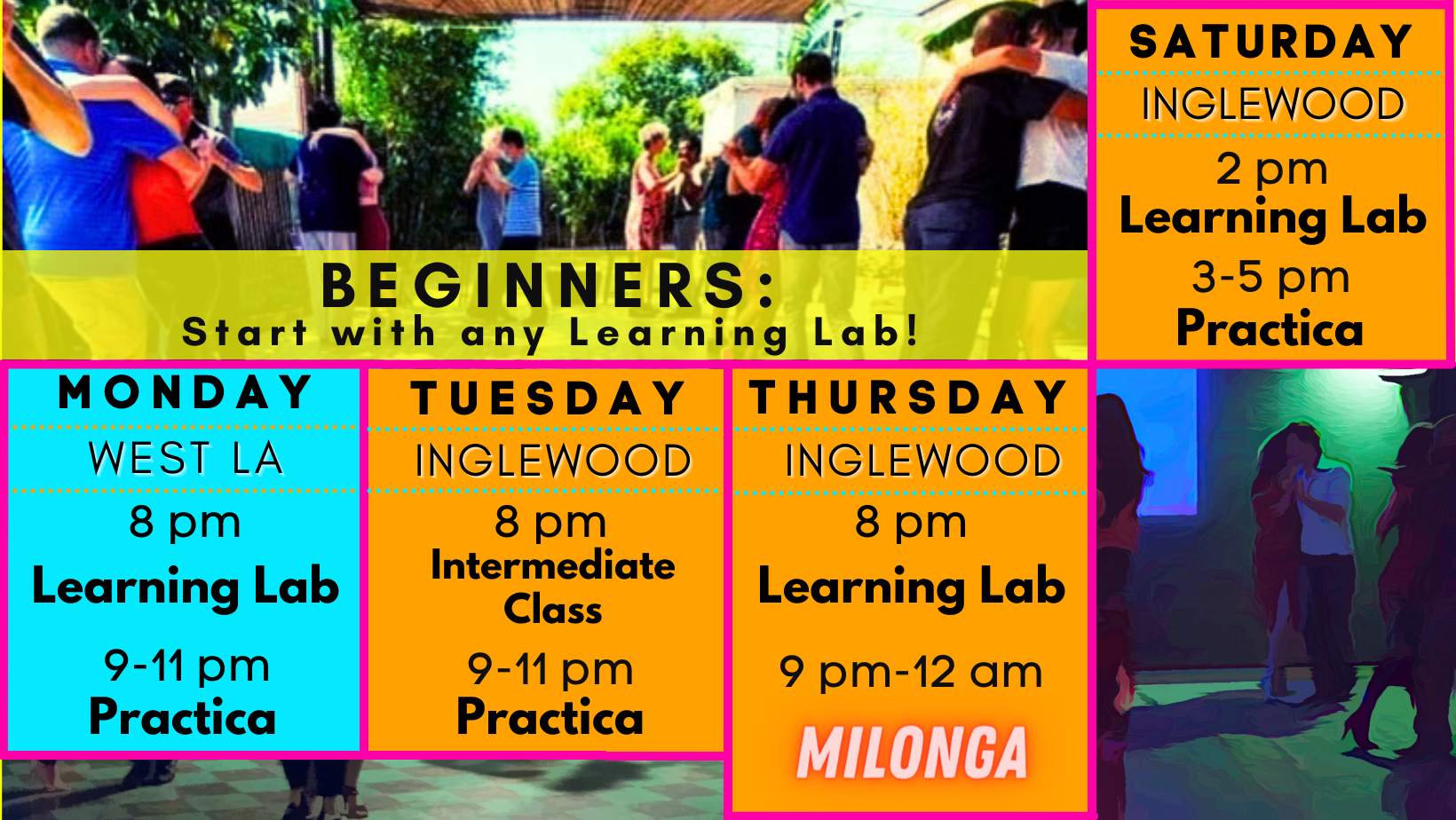Masterful Performances, Great Tangos
/by Derrick del Pilar
Social tango is an intimate, personal experience that puts you in direct contact with another body—the most sublime dances make you forget that you are on a crowded pista, surrounded by dozens or even hundreds of other couples: for a moment, you slip between the walls of the worlds, you are alone with your partner and the music.
Stage tango, on the other hand, is a public, shared experience that asks the audience to sit still and vicariously feel the emotions externalized through the movements the couple performs—the most sublime dances make you forget that you are sitting idle, gazing at the stage or the center of the floor: for a moment, you are the performer, you feel what they feel and what the whole audience feels.
But are these two forms of the dance really so different? In tango, you are always subjected to someone’s gaze, whether you are accepting or declining a cabeceo, sitting at a table watching the dancers, our out on the floor yourself.
When you are dancing socially at a milonga, anyone who is sitting out the tanda can watch you. Potential partners take note of your posture, your musicality, the look on your current partner’s face. They see if you crash into the couple behind you, if you cut recklessly across the lanes of traffic.
When you are performing, you must know the song by heart, every phrase, every pause, every fill. The audience can tell if you truly love the song, if you truly respect the dance, if you are really giving it your all—putting all the meat on the fire, as a man who truly loved tango once wrote.
The milongueros of decades past, the ones who kept the dance alive during the dark years of the military dictatorship in Argentina, knew how to walk in both worlds. They knew how to give their partners great dances at the milonga, and how to move onlookers when they gave exhibitions. In these videos, you’ll see some of them, and some of the younger generation of tango greats. The songs they dance are classic instrumentals, time-honored performance songs. Some may not make an appearance at your local milonga, but they should be in any well-listened dancer’s library.
Gallo ciego
Orq. Osvaldo Pugliese
iTunes Album: The Tango Lesson Original Movie Soundtrack
Pupi Castello & Luciana Valle:
Watch these two milongueros lead understated, engaging dances to this powerful song while their partners follow with grace and elegance.
Viviani
Orq. Carlos Di Sarli
iTunes Album: Cafetín de Buenos Aires Vol. 9
Gerardo Portalea & Marta:
Portalea is a legend among milongueros, known for his smooth elegance—and his dance perfectly interprets the music of Carlos Di Sarli.
Danzarín
Orq. Aníbal Troilo
iTunes Album: The History of Tango: Aníbal Troilo, Recordings 1957–1958
Geraldine Rojas & Gabriel Misse:
When they were barely teenagers, these two amazing dancers could already perform this complicated choreography to this incredible piece by Troilo...all I can do is watch in awe.
A Evaristo Carriego
Orq. Osvaldo Pugliese
iTunes Version (sadly, the Pugliese is not available—Color Tango’s version is the closest): Con estilo para bailar
Gavito & María Plazaola:
This was the late, great Gavito’s signature song. Here he performs accompanied to perfection by his last partner, María Plazaola.
El flete
Orq. Juan D’Arienzo
iTunes Album: The Tango Lesson Original Movie Soundtrack
Chico & Juana:
Margarita Guillé & Hugo Daniel:
Rhythm, nerve, force and character—these are the elements that D’Arienzo said defined the tango, and you can see them in these two performances, one by the king and queen of “nuevo,” and one by Margarita Guillé, one of Buenos Aires’ most respected milongueras.


